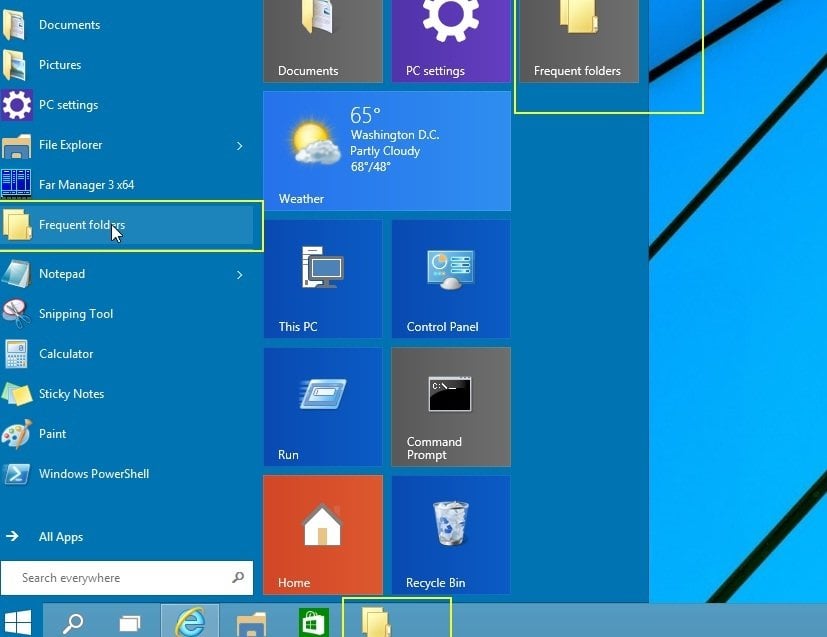

However, folders under \Programs are never aggregated more than one level deep, unlike earlier versions where you could nest very long folder structures and which were replicated exactly in the Start Menu. UWP apps are added from the provisioned user profile areas as well. They are created from the same two areas, %APPDATA\Microsoft\Windows\Start Menu and %ALLUSERSPROFILE%\Microsoft\Windows\Start Menu and aggregated together. The later versions of the Start Menu introduce some oddities:.
Windows start menu folder windows 8#
Windows 8 and 8.1 introduced the “Start Screen” that I spent a long time trying to figure out the intricacies of (with some interesting results – here are some examples of it) – but seeing as though Microsoft dialed that paradigm back, let’s just leave it where it was. Ideally, as already stated earlier, we want something that’s pretty simple and straightforward to create, manage and maintain. It can also be pretty intensive to maintain this. This worked pretty well, but on the latest versions of Windows it doesn’t behave well, mainly due to new ACLs and the way the Start Menu is generated (see below). The theory was, they would have their entire Start Menu redirected to this folder and the NTFS ACLs would allow it to only contain application shortcuts their group membership entitled them to. Under Windows 7/2008 R2 I used to do this by redirecting the Start Menu to a local folder that was mirrored from a network share, and contained NTFS-restricted shortcuts that the user could only access based on their AD security groups. I prefer, where possible, to get the user’s entire Start Menu built during the logon process, so it’s ready to go as soon as the logon completes. Many have traditionally used the Citrix Receiver/Workspace app to do this, but a) you may not be in a Citrix environment, or b) using the Workspace App in this way often feels clunky, drawn-out and messy – you’ve got to wait for the app to launch and kick in, at which point it then injects its own shortcuts into a pre-existing Start Menu. I’ve always been a fan of building a dynamic Start Menu when the user logs in based around their entitlements. Up to Windows 7/2008 R2, these additional features were quite simple and could be manipulated by Group Policies, Registry items and special folders – but with Windows 8 and upwards, we were introduced to wonderful things like the Start Tiles, Start Screen, UWP apps, WinX menus and many others that have made our management of this area of the UI much harder.īefore we start and dive in, let’s be clear what we are talking about here – we’re not referring to the Start Tiles (which are shown below) However, as operating systems moved on this became less a pure filesystem and was supported more by other items in the interface. The Start Menu has always been a combination of filesystem shortcuts that were applied to the user (from %APPDATA%\Microsoft\Windows\Start Menu) and the device (common start menu items were stored in an area that now maps to %ALLUSERSPROFILE%\Microsoft\Windows\Start Menu). How can we manage it so that it updates dynamically based on user entitlements so that we have security and flexibility, but also is easy to manage and doesn’t require a lot of updating? History The Start Menu in Windows used to be a user-customizable area of the filesystem, but ever since Windows 8, new functionality has been added here that has made it much more tricky to manage.

Let’s sort the Start Menu out…and find a nice, secure, simple way of managing it.


 0 kommentar(er)
0 kommentar(er)
